Buying a kayak is a big investment, but with a little research you’ll ensure that it’s a wise one. Keep reading for guidelines to choosing a kayak that fits both your paddling bucket list and your budget.
Where will you use your kayak?
Your first step in choosing a kayak is deciding where you’re going to use it most often. Will you be paddling on sheltered ponds or Lake Champlain? Like Champ, a one-size-fits-all kayak is a mythical beast, so a good rule of thumb is to buy a kayak for the water you’ll paddle most often, and rent when you venture elsewhere.
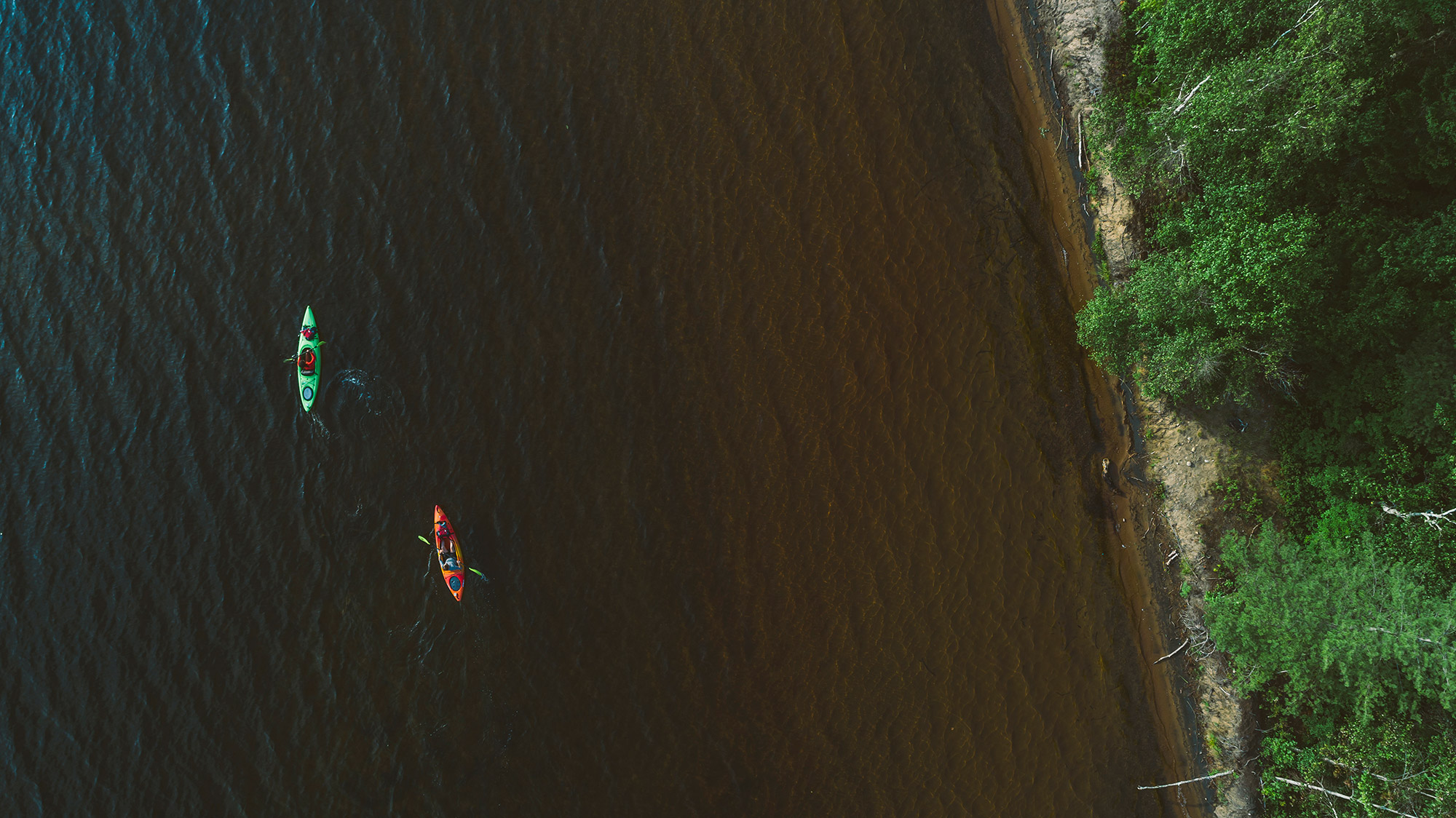
Sheltered lakes and ponds, slow-moving rivers, and marshes
Known as “flat-water,” these areas are known for calm water and relative protection from wind. Recreational kayaks are built for flat-water, with easy entry and exit suited to spontaneous swimming, wide seats for a relaxed ride, and durable construction that’s compatible with bumping along river shoals. Sold in both Sit-On-Top and Sit-Inside styles, recreational kayaks are great for relaxed days on the water, family outings, and beginning kayakers.
Exposed lakes, wide-open rivers, ocean
Known as “open-water,” this environment is characterized by windy, choppy conditions. Touring kayaks are sit-inside boats designed to slice through rough waters while stabilizing the paddler via a snug seat, allowing for efficient paddling. The extended length of touring kayaks creates increased storage space, making this a logical choice for overnight trips.
READ MORE: ESSENTIAL GEAR FOR KAYAK TOURING
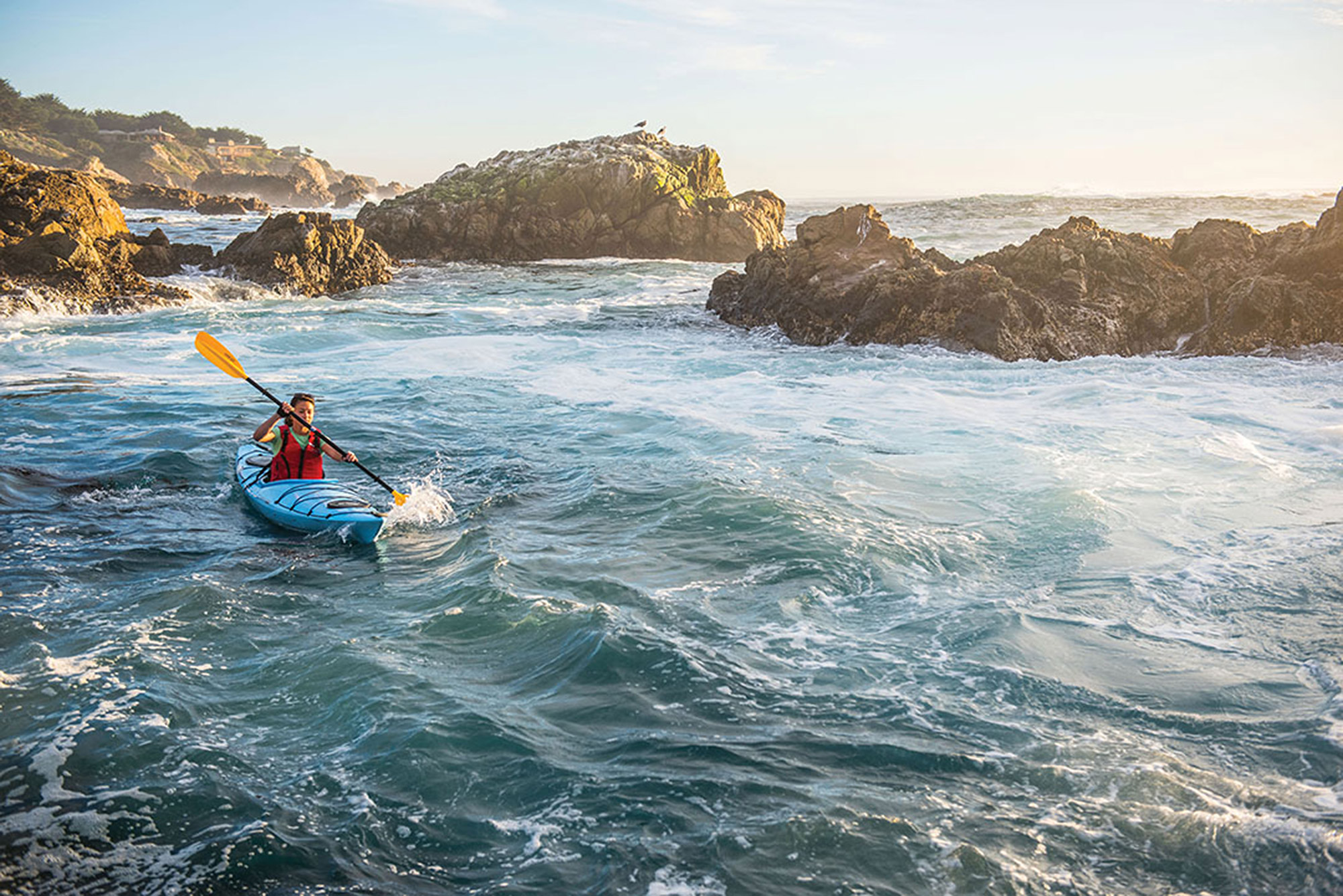
Your Favorite Fishing Spot
Fishing kayaks come in both recreational and touring models, the difference being enhanced features for anglers. Think molded-in rod holders, Captain’s chairs, and in higher-end models, pedal driven systems that allow for hands-free maneuvering.
GO: Recreational Kayaks | Touring Kayaks | Fishing Kayaks
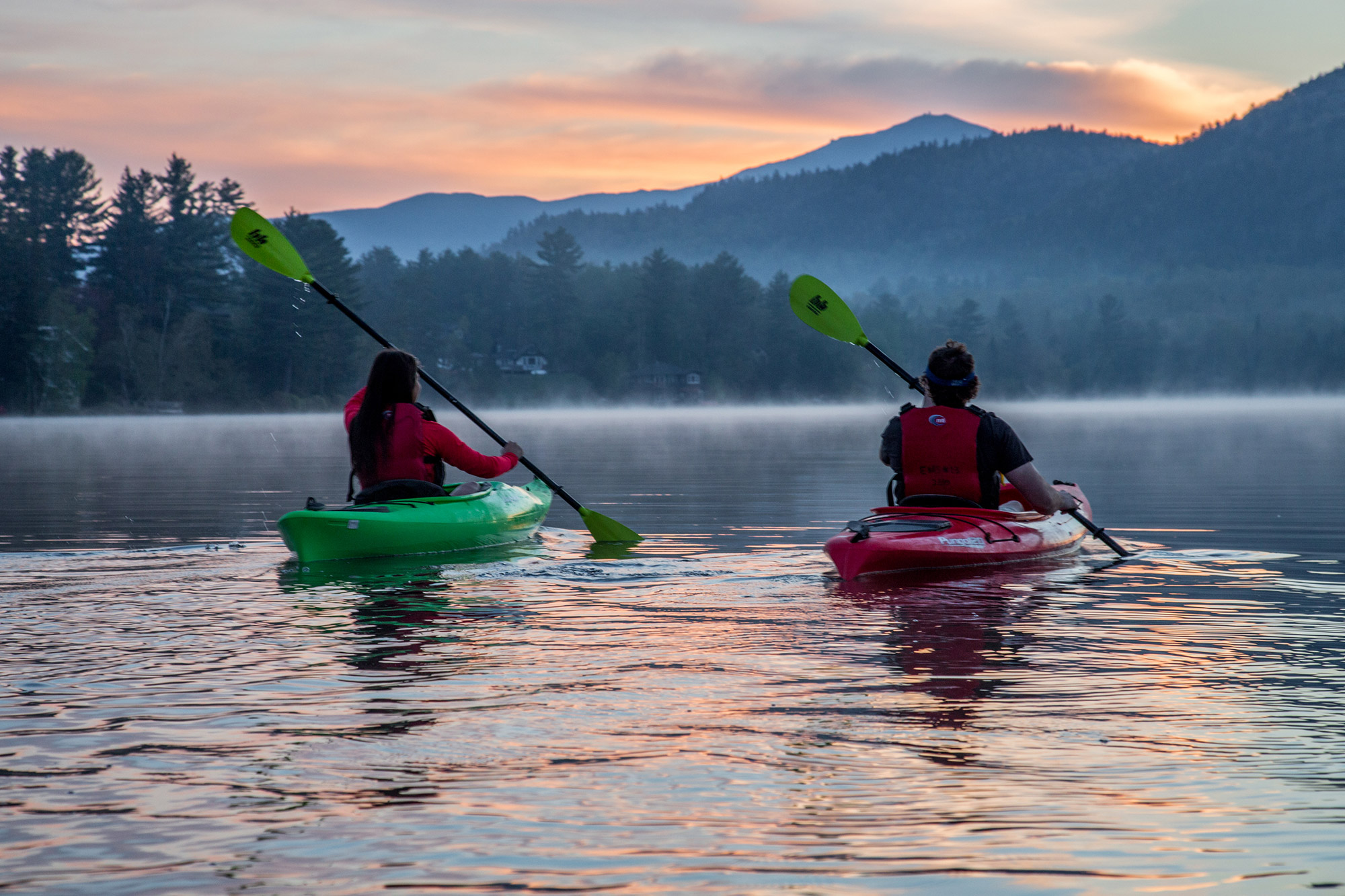
Sit-on-top vs. Sit-inside
Sit-on-Top Kayaks are straightforward and user-friendly. Designed for recreational use on lakes, slow moving rivers, and marshes, consider a sit-on-top if you’re looking for the following:
- Stability: Getting in and out of the boat is easy from shore, or from the water in case you take a mid-paddle swim (intentionally or not).
- Getting wet: The open design guarantees you’ll get splashed.
- Self-draining design: Water drains through “scupper holes,” meaning that you’ll never have to pump water out by hand, and if you flip over, your boat won’t get swamped.
- Freedom to move around: The open design gives you more options for lounging, dipping your feet in the water, or stretching out.
- Beginner and kid-friendly recreation.
- Sturdy design: Many are built from plastic, resulting in impact and UV resistant kayaks.
Sit-Inside Kayak sare streamlined and more efficient for paddling from Point A to Point B. They are designed to handle rough conditions, like those found in large lakes and bays, though designs vary from extremely lean sea kayaks to less-lean but more comfortable “day touring” kayaks. Consider a sit-inside kayak if you’re looking for the following:
- Staying dry: Sitting in the cockpit, with the option to add a spray skirt, keeps you drier and warmer.
- Long distance day trips: Multiple points of contact in the cockpit give you stability and control in rough water. A streamlined design also allows for more efficient paddling.
- Multi-day capability: Bulkheads provide dry, interior storage for gear.
- Intermediate to advanced trips: Knowledge of wet exits and solo kayak draining are necessary in the event that you capsize in open water.
- Light weight options: High-end touring style kayaks come in lighter, albeit more expensive, materials like fiberglass.

Storage Space
What do you need to take with you?
Recreational kayaks typically provide enough storage space for a half-day on the water, with features like a water bottle holder, a small bulkhead, and in sit-on-top models, deck space sized to carry a small cooler.
Touring kayaks typically sport at least two bulkheads capable of storing overnight gear. Unlike recreational kayaks, they are not designed for storing bulky items (like coolers) on the deck.
Fishing kayaks are designed with fishing gear in mind, with features ranging from storage space for live fish to transducer compatible scuppers.

Kayak Specs
Materials
The most common materials used in kayak construction are plastic and composites consisting of fiberglass and/or carbon-fiber. The most noticeable differences between plastic and composite boats are weight, durability, and price. While plastic kayaks are heavier than composite, they are significantly cheaper. On the other hand, composite kayaks are much lighter and more graceful on the water. Plastic kayaks can be launched on rocky shores, tossed into the back of a truck, scraped over shoals, and rough-housed without much concern. In contrast, composite kayaks are more delicate, making encounters with underwater objects and rocky shores situations to be avoided. Generally, composite kayaks are a good investment for serious touring kayakers and experienced paddlers looking for an upgrade, while plastic kayaks are the recommended starting purchase.
Weight
Buy a kayak that you can haul and launch yourself if you plan to adventure solo. Will you just be dragging it from your backyard to the waterline or will you have to get the kayak on top of your car to transport? Check the kayak’s “Tech Specs” for weight information. In many cases, the lighter the kayak, the higher the price.
Length
The longer and narrower the kayak, the faster and more smoothly it travels through water. Touring kayaks range from about 14 to 18 feet, and while they take more effort to turn, they travel more efficiently. Most recreational kayaks are in the 8- to 13-foot range, sacrificing cruising efficiency for stability. Their shorter length makes it easier to make tight turns, a benefit when navigating marshes or downed vegetation.
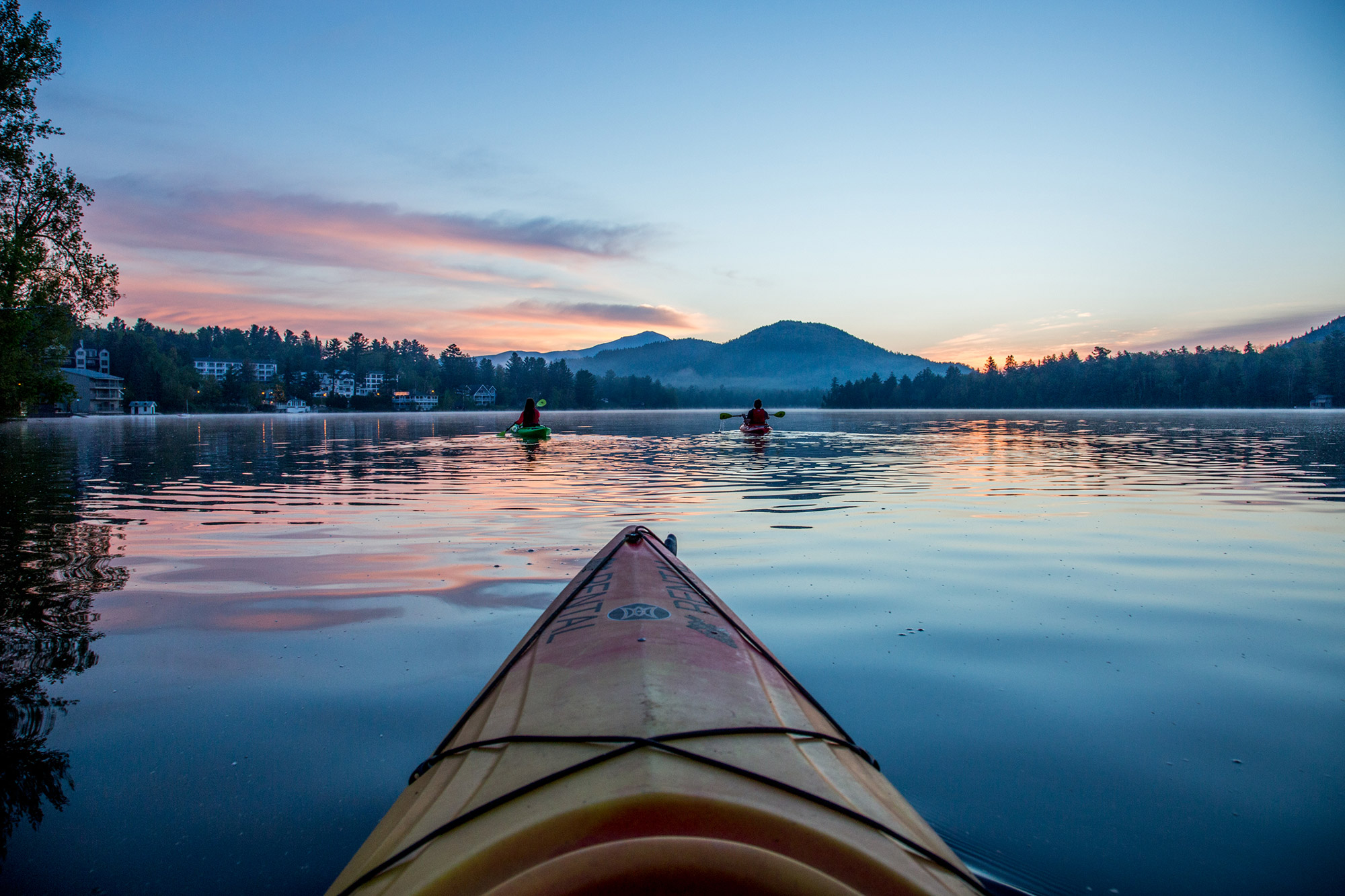
Kayak Fit
Not every kayak fits every body. Pay attention to a few specs, and sit in the boat if possible, to make sure it fits you and is comfortable to spend time in.
- Weight: Kayaks are designed for a maximum load capacity, including you and your gear(don’t overlook this if you plan to overnight from your boat). Overburdening a kayak can cause you to sit too low in the water, compromising your ability to paddle.
- Cockpit width: Especially important with touring kayaks, which are designed to fit snugly. You want enough contact with boat to maintain control without feeling like your circulation is being cut off. With other types of kayaks, however, a roomier cockpit allows for easier entry and exit.
- Cockpit Length: This is something to be aware of if you have longer legs than the average person. Check the “Kayak Description” measurements to make sure you’ll fit, or to make entry and exit easier.
- Number of paddlers: Solo or tandem kayak? Individual kayaks give everyone more freedom, but a tandem kayak is a good option for mixed skill levels.
READ MORE: BEST PADDLING ACCESSORIES FOR COMFORT IN THE COCKPIT
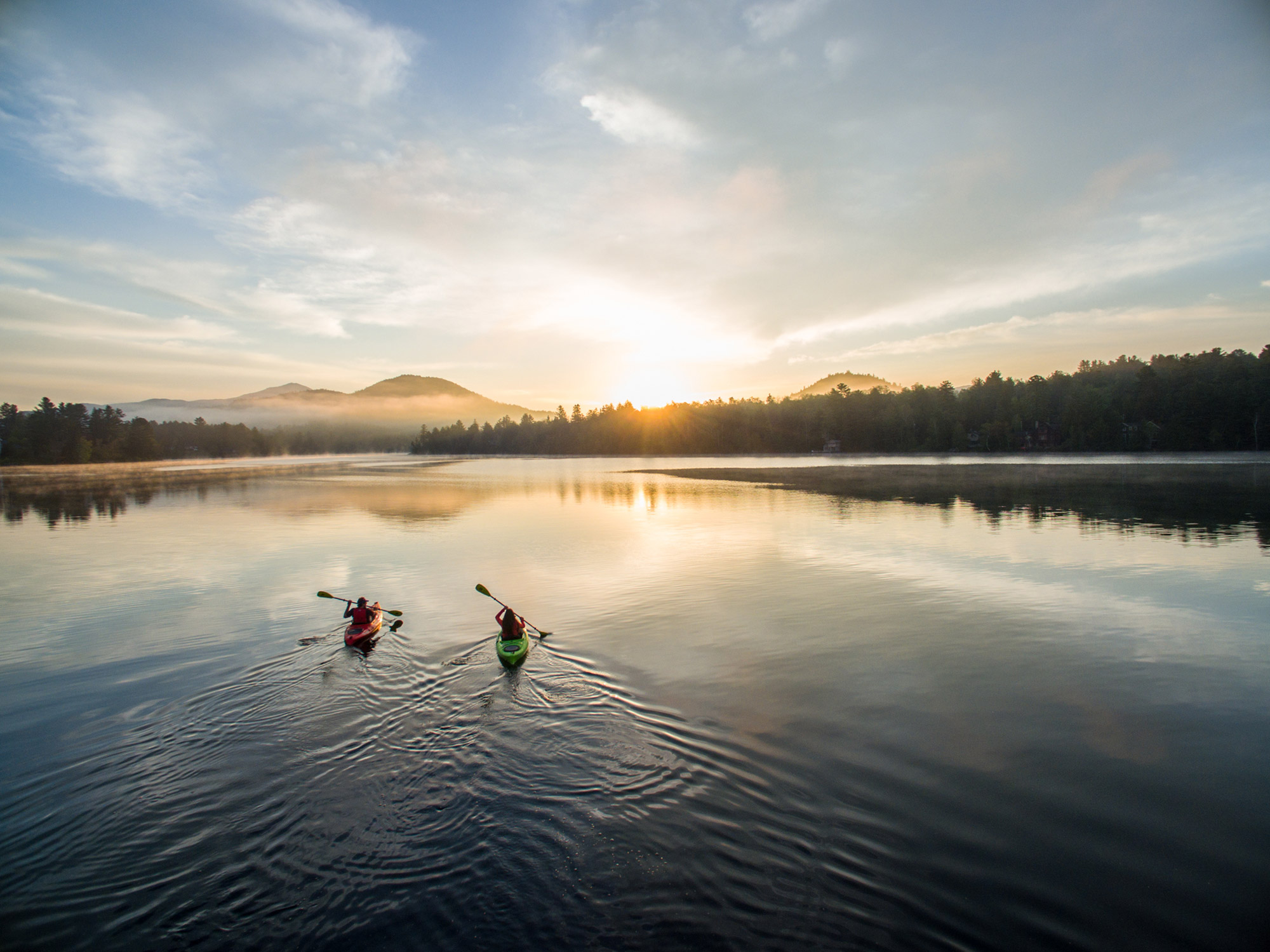
Transporting your Kayak
How will you transport your kayak from storage to the water? Before you choose a kayak, consider whether your vehicle is capable of transporting it. Kayak racks exist for every type of vehicle, from trailers to rooftop docks, but it’s important to first make sure that your car can support the type of rack that your kayak requires. If transportation and storage are an issue, consider an inflatable kayak.
Try one on for size
If you’re still not sure which type of kayak you want to buy, try renting until you find a style you like. Rental fees are a small price to pay if it allows you to buy the right kayak on your first try. EMS Schools offers guided kayak outings in Rhode Island and Massachusetts, as well as rentals at many locations.
Carla Francis
Carla is full-time road tripping North America’s trailheads with her husband in their muddy, retrofitted Xterra. After fulfilling her life goal of seeing an Organ Pipe Cactus, she’s back to her East Coast stomping grounds. @backcountrycookes is a collection of Carla and Brian’s lightly photoshopped travels.




